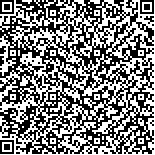|
|
| |
|
|
| 本文已被:浏览 258次 下载 281次 |

码上扫一扫! |
|
|
| 多种痕量元素对鳗草毒性的半效应浓度研究: 以叶片伸长长度和最大光量子产量为指标 |
|
王新华1,2,3,4,5,6, 张玉1,2,3,4,5,6, 刘明杰1,2,3,4,5,6, 徐少春1,2,3,4,5,6, 岳世栋1,2,3,4,5,6, 张晓梅1,2,3,4,5,6, 周毅1,2,3,4,5,6
|
|
1.中国科学院海洋生态与环境科学重点实验室, 山东 青岛 266071;2.青岛海洋科学与技术国家实验室海洋生态与环境科学功能实验室, 山东 青岛 266237;3.中国科学院海洋大科学研究中心, 青岛市南海路7号, 266071;4.中国科学院海洋牧场工程实验室, 山东 青岛 266071;5.中国科学院大学, 北京 100049;6.山东省实验海洋生物学重点实验室, 山东 青岛 266071
|
|
| 摘要: |
| 海草床是重要的近岸海洋生态系统之一。痕量元素污染是造成沿海海草床退化的原因之一。鳗草(Zostera marina L.)是温带海域最广泛分布的海草种。本文通过室内模拟实验, 以鳗草地上部分伸长长度和最大光量子产量(Fv/Fm)为评价指标, 研究了砷、铬、汞、镍、纳米银、锌6种痕量元素胁迫下对鳗草的毒性效应, 并确定6种痕量元素对鳗草的半效应浓度(EC50)。结果表明, 6种元素均对鳗草地上部分伸长长度和Fv/Fm产生了抑制作用, NaAsO2、Na2CrO4·4H2O、HgCl2、AgNPs、NiSO4·6H2O、ZnSO4·7H2O对鳗草的半效应浓度分别为2.1 mg/L(As3+: 16 μmol/L)、89.8 mg/L(Cr6+: 384.6 μmol/L)、0.65 mg/L(Hg2+: 2.2 μmol/L)、3.0×103 mg/L(Ni2+: 1.14×104μmol/L)、7.499×104 mg/L(Zn2+: 2.6×105 μmol/L), 不同痕量元素对鳗草的毒性大小为Hg>As>AgNPs>Cr>Zn>Ni。本文研究结果将为受损海草床的生态修复及保护管理提供科学依据。 |
| 关键词: 鳗草 痕量元素 生长 叶绿素荧光 EC50 |
| DOI:10.11759/hykx20231023001 |
| 分类号:P735 |
| 基金项目:国家重点研发计划专项(2022YFD2401300);国家自然科学基金项目(32270405;42206142) |
|
| Study on toxicity by half-effect concentrations of trace elements in eelgrass: leaf elongation length and maximum light quantum yield as indexes |
|
WANG Xinhua1,2,3,4,5,6, ZHANG Yu1,2,3,4,5,6, LIU Mingjie1,2,3,4,5,6, XU Shaochun1,2,3,4,5,6, YUE Shidong1,2,3,4,5,6, ZHANG Xiaomei1,2,3,4,5,6, ZHOU Yi1,2,3,4,5,6
|
|
1.Key Laboratory of Marine Ecology and Environmental Sciences, Chinese Academy of Sciences, Qingdao 266071, Shandong, China;2.Functional Laboratory of Marine Ecology and Environmental Science, Qingdao National Laboratory of Marine Science and Technology, Qingdao 266237, Shandong, China;3.Oceanology Research Center, Chinese Academy of Sciences, 7 Nanhai Road, Qingdao 266071, China;4.Marine Pasture Engineering Laboratory, Chinese Academy of Sciences, Qingdao 266071, Shandong, China;5.University of Chinese Academy of Sciences, Beijing 100049, China;6.Shandong Key Laboratory of Experimental Marine Biology, Qingdao 266071, China
|
| Abstract: |
| Eelgrass has a complete structure consisting of roots, stems, and leaves and completes its entire life cycle in seawater. In this study, the toxic effects of sodium arsenite (NaAsO2), sodium chromate tetrahydrate (Na2CrO4·4H2O), mercury chloride (HgCl2), nano-silver (AgNPs), nickel sulfate hexahydrate (NiSO4·6H2O), and zinc sulfate heptahydrate (ZnSO4·7H2O) on eelgrass were studied through laboratory simulation experiments. The different concentrations used for inducing stress were NaAsO2 (0, 1, 2, 4, and 8 mg/L), Na2CrO4·4H2O (0, 20, 40, 80, and 120 mg/L), HgCl2 (0, 0.4, 0.5, 0.6, and 0.7 mg/L), AgNPs (0, 1, 4, 7, and 10 mg/L), NiSO4·6H2O (0, 1×103, 3×103, 5×103, and 10×103 mg/L), and ZnSO4·7H2O (0, 0.01×103, 0.05×103, 0.1×103, 0.5×103 mg/L). The partial elongation length and maximum light quantum yield (Fv/Fm) were inhibited by all six elements. The half-effect concentrations of NaAsO2, Na2CrO4·4H2O, HgCl2, AgNPs, NiSO4·6H2O, and ZnSO4·7H2O were 2.1 mg/L (As3+: 16 μmol/L) and 89.8 mg/L (Cr6+: 384.6 μmol/L), 0.65 mg/L (Hg2+: 2.2 μmol/L), 3.0×103 mg/L (Ni2+: 1.14×104 μmol/L), 7.499×104 mg/L (Zn2+: 2.6×105 μmol/L). The toxicity was in the order of Hg > As > AgNPs > Cr > Ni > Zn. |
| Key words: eelgrass trace elements plant growth chlorophyll fluorescence EC50 |
|
|
|
|
|
|
